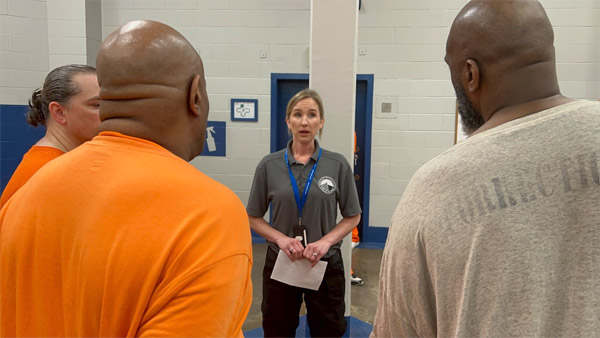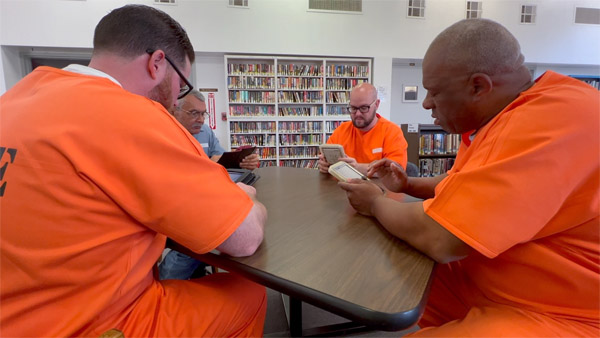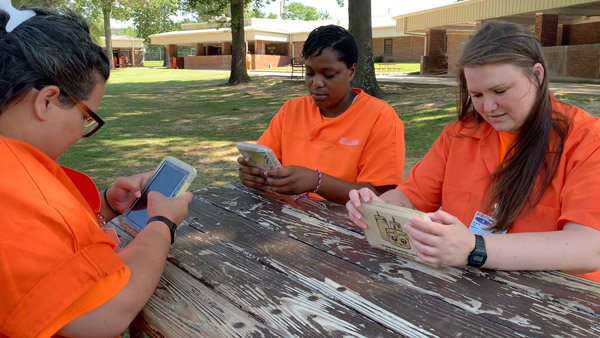Shortly after his appointment as executive director of the Oklahoma Department of Corrections (DOC), Steven Harpe recognized that a critical voice was absent from decision-making – the voice of over 21,000 incarcerated individuals in Oklahoma’s correctional facilities. To make meaningful improvements in facility conditions and support rehabilitation, Harpe established the Office of Offender Advocacy, appointing Nicole Flemming as chief to bring inmates’ perspectives directly to him the DOC announced in a release today.
Flemming, a long-time ODOC employee and former administrator of the Community Outreach Unit, which serves as a liaison between inmates’ families and the agency while also advocating for crime victims, took on the mission of gathering feedback from the inmate population. She began by attending inmate council meetings to hear directly from inmate representatives elected by their peers. However, to fully understand the population’s perspectives, she initiated a direct survey of the entire inmate population. This inaugural survey, conducted in November 2023, is believed to be the first of its kind nationwide.

“Giving a voice to the men and women in our facilities is essential for meaningful change,” said Chief Flemming. “Through direct feedback and open conversations, we’re not only gaining insight into their daily experiences but can also make targeted improvements that directly impact their well-being and rehabilitation. This survey is a testament to ODOC’s commitment to listening, learning, and evolving for a safer, stronger Oklahoma.”
Initially, some inmates were uncertain about the survey’s true anonymity, but just over 12,000, or approximately 55%, chose to participate. Following the survey, Flemming’s team conducted over 2,000 “guided conversations,” providing further insight into inmate feedback and enabling targeted actions to address areas for improvement.
Flemming’s unit collaborated with ODOC staff across the agency to create both agencywide and facility-specific improvement plans, addressing issues of all sizes. Key focus areas included food service, access to pro-social activities, program availability, and facility conditions, and the collective efforts of ODOC staff became evident in this year’s survey results.
In the latest survey, inmate participation rose significantly, with more than 14,000 inmates—approximately 68% of the ODOC population—responding, marking a 23% increase over the previous year. This increase suggests growing inmate engagement and feedback, with nearly 5,500 inmates opting for follow-up guided conversations.

Based on a five-point Likert scale, the survey questions covered topics such as communication, tablet technology, access to programs and activities, health and food services, and overall facility conditions. Even with only ten months since the initial survey, several facilities reported notable improvements in this latest round.
Pro-social activities saw significant improvements at Allen Gamble Correctional Center, Mabel Bassett Correctional Center, Eddie Warrior Correctional Center and Jackie Brannon Correctional Center, with satisfaction increases ranging from 20.5% to 37%. Health care and mental health services also improved, with Union City Community Corrections Center seeing a 23% increase in mental health service satisfaction.
Although food services remained the lowest-rated category, Bill Johnson Correctional Center, Howard McLeod Correctional Center and Jim E. Hamilton Correctional Center made notable strides, increasing satisfaction between 15% and 35%. ODOC is committed to continued improvements in this area based on ongoing feedback.
In terms of overall facility performance, the Oklahoma State Reformatory, Northeastern Oklahoma Community Corrections Center, JBCC, UCCCC, JEHCC, EWCC, BJCC and HMCC showed the most improvement in survey scores, reflecting a leadership commitment to enhancing inmate services and living conditions.
ODOC plans to expand its survey initiatives to gather input from various stakeholder groups, aiming to strengthen its relationships and further its mission of transforming lives for a stronger Oklahoma.

